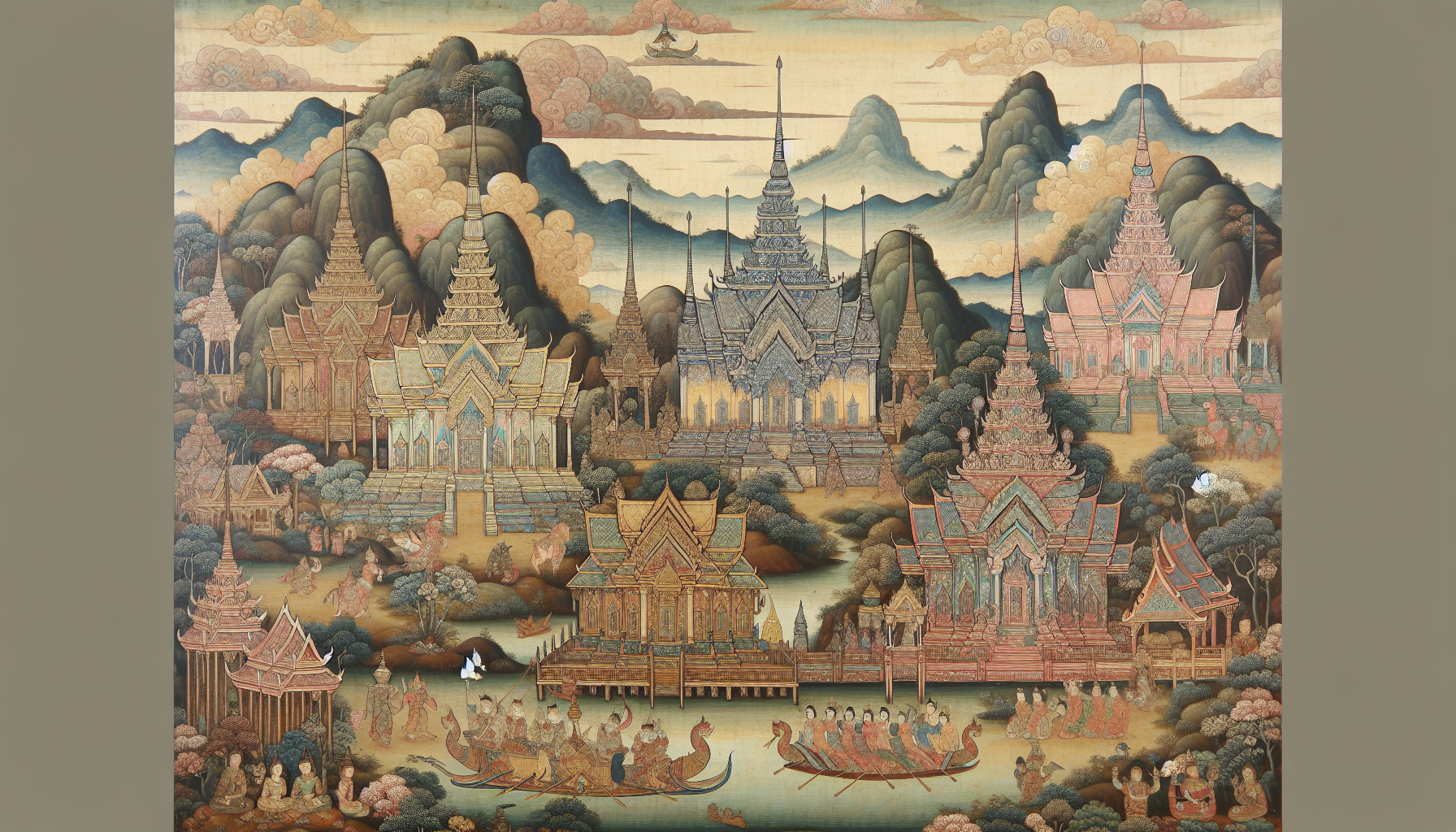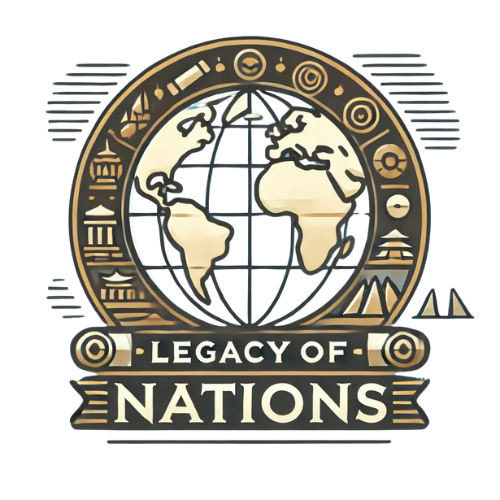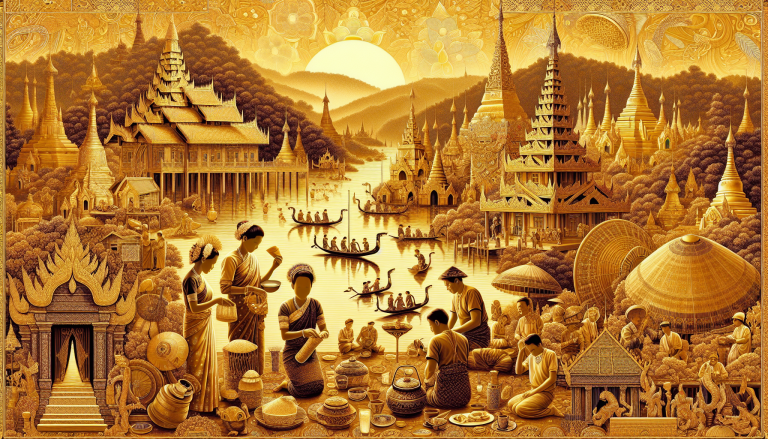Explore the Rich Past: Delving into Southeast Asian Civilizations
Explore Southeast Asian civilizations! Uncover dynasties, architecture, and cultural diversity. Your historical adventure awaits!

Southeast Asian Civilizations
To truly appreciate the rich history of Southeast Asian civilizations, you need to delve into the influential dynasties and the evolution of architecture that have shaped the region. Myanmar, with its complex history and cultural diversity, offers a fascinating case study.
Influential Dynasties
In Myanmar, several dynasties played pivotal roles in shaping the cultural and political landscape. Among the most renowned are the Pyu, the Bagan Kingdom, and the Konbaung Dynasty.
Pyu City-States (c. 200 BCE – 900 CE):
The Pyu city-states were some of the earliest recorded civilizations in Myanmar. They established urban centers with sophisticated social, economic, and political systems.
| Dynasty | Time Period | Notable Contributions |
|---|---|---|
| Pyu | c. 200 BCE – 900 CE | Urban planning, early adoption of Buddhism |
Read more about the Pyu civilization myanmar to further explore their contributions.
Bagan Kingdom (1044-1297 CE):
The Bagan Kingdom is perhaps the most well-known dynasty due to its dramatic rise and cultural achievements. This era saw the construction of thousands of temples, pagodas, and monasteries in the Bagan plain.
| Dynasty | Time Period | Notable Contributions |
|---|---|---|
| Bagan | 1044-1297 CE | Development of Theravada Buddhism, extensive temple construction |
Discover the bagan kingdom history for a deeper look into its impact on Myanmar’s culture and religion.
Konbaung Dynasty (1752-1885 CE):
The Konbaung Dynasty was the last ruling dynasty before the British colonization. They expanded Myanmar’s borders significantly and modernized the country by adopting Western techniques.
| Dynasty | Time Period | Notable Contributions |
|---|---|---|
| Konbaung | 1752-1885 CE | Territorial expansion, modernization efforts |
See more on burmese monarchs and their roles in shaping the nation’s history.
Evolution of Architecture
The architectural evolution in Myanmar reflects the changing influences and internal dynamics of its various dynasties, from the early Pyu city-states to the architectural marvels of the Bagan Kingdom.
Pyu Architecture:
The Pyu cities showcased early urban planning and monumental architecture, including stupas and city walls.
| Architectural Feature | Description |
|---|---|
| Stupas | Dome-shaped structures serving as Buddhist shrines |
| City Walls | Fortified boundaries protecting urban centers |
Learn about myanmar ancient architecture to understand these early developments.
Bagan Architecture:
Bagan is celebrated for its vast array of temples and pagodas. The architecture of this period is characterized by its brick structures and intricate stucco work, influenced heavily by Theravada Buddhism.
| Architectural Feature | Notable Example |
|---|---|
| Temples | Ananda Temple |
| Pagodas | Shwezigon Pagoda |
For more insights, visit historical sites in Myanmar.
Konbaung Architecture:
The Konbaung period saw the introduction of Western architectural styles. Royal palaces and monasteries combined traditional Myanmar styles with colonial influences.
| Architectural Feature | Description |
|---|---|
| Royal Palaces | Structures showcasing both Myanmar and European designs |
| Monasteries | Religious buildings blending new architectural techniques |
Explore myanmar historical events to note how these changes came about.
Understanding these influential dynasties and the evolution of architecture helps to appreciate the complex fabric of Myanmar’s history. Dive into more about these ancient Myanmar civilizations to enrich your journey through Southeast Asia.
Political Landscape of Southeast Asia
The political history of Southeast Asia is marked by the rise and fall of significant powers and the influential role of major religions. Understanding these aspects can enrich your appreciation of this region’s complex past.
Classical Southeast Asian Powers
The classical period of Southeast Asia, spanning from the 14th to the 18th centuries, was dominated by five major powers. Each contributed to the region’s political landscape and cultural heritage.
-
Myanmar (Ava Kingdom): Located in the heart of present-day Myanmar, the Ava Kingdom (1364-1555) emerged after the fall of the Pagan Empire and played a crucial role in unifying the region’s diverse ethnic groups. The kingdom’s influence can still be seen in ancient Myanmar civilizations.
-
Vietnam (Later Le dynasty): The Later Le dynasty (1428-1789) ruled over an independent Vietnam, emphasizing Confucianism and centralized governance. This period saw significant cultural and agricultural advancements.
-
Ayutthaya (Thailand): The Tai state of Ayutthaya (1351-1767) flourished for over four centuries. It became a major commercial hub, trading extensively with regional neighbors and distant powers, contributing to Myanmar’s historical events.
-
Majapahit (Java): The Majapahit Empire (1293-1527), centered on the island of Java in present-day Indonesia, was one of the last major Hindu empires in the region. Its reach extended throughout much of Southeast Asia, influencing local cultures and political structures.
-
Malacca (Malay Peninsula): The Sultanate of Malacca (1400-1511) was a significant maritime power, controlling trade routes connecting the Indian and Pacific Oceans. The influx of trade brought diverse cultural influences to the region.
| Major Power | Time Period | Key Contributions |
|---|---|---|
| Ava Kingdom | 1364-1555 | Unification of diverse ethnic groups in Myanmar |
| Later Le dynasty | 1428-1789 | Emphasis on Confucianism and governance |
| Ayutthaya | 1351-1767 | Major commercial and cultural hub |
| Majapahit | 1293-1527 | Influential Hindu empire |
| Malacca Sultanate | 1400-1511 | Control of key maritime trade routes |
Read more about ancient Burmese dynasties and their influence on Southeast Asia.
Influence of Major Religions
Religions have played a vital role in shaping Southeast Asia’s political and cultural landscapes. The region witnessed the influence of various major religions over the centuries.
-
Islam: By the late 17th century, Islam had become the dominant religion in Southeast Asia, spreading through trade and settlement activities in port cities from as early as the 9th century (Britannica). It took root from the western tip of Sumatra to the Philippine island of Mindanao, transforming local cultures and governance.
-
Buddhism: Theravada Buddhism, which remains prevalent in Myanmar today, significantly influenced the region’s spiritual and political dynamics. The spread of Buddhism established monastic communities and informed the legal and educational systems. Learn more about Theravada Buddhism in Myanmar.
-
Hinduism: Hinduism’s presence in Southeast Asia, particularly through the Majapahit Empire, brought along intricate art, literature, and governance models. The region’s heritage includes significant Hindu monuments and traditions.
-
Christianity: Christianity arrived in the early 16th century, with the northern Philippines seeing a substantial presence by the 18th century due to minimal competition with existing religious traditions.
These religious influences not only shaped cultural practices but also fostered political alliances and conflicts, which continue to influence the region today.
To delve deeper into Myanmar’s ancient culture and historical events, explore our detailed articles on historical sites in Myanmar and ancient Myanmar civilizations.
Cultural Diversity in Southeast Asia
Linguistic Variations
In Southeast Asia, the vast cultural diversity includes a rich tapestry of languages. With approximately a thousand of the world’s six thousand languages spoken in the region, language diversity is a key feature. Some of the primary linguistic families prevalent in the area are Austro-Asiatic, Tai, Tibeto-Burmese, and Austronesian.
This linguistic variety is reflected in the day-to-day lives of the region’s inhabitants. From nomadic groups who made their lives on boats or in dense jungles to settled communities focused on agriculture, fishing, and trade, each community has adapted their language to their lifestyle.
| Language Family | Examples |
|---|---|
| Austro-Asiatic | Khmer, Vietnamese |
| Tai | Thai, Lao |
| Tibeto-Burmese | Burmese, Tibetan |
| Austronesian | Malay, Tagalog |
For those exploring the linguistic roots and ancient scripts of the region, our detailed article on ancient Myanmar scripts offers deeper insights.
Socio-Religious Transformations
Southeast Asia’s cultural landscape is also deeply influenced by its socio-religious diversity. Historical records indicate that religious practices have significantly evolved, especially with the arrival of major religions like Buddhism, Hinduism, Islam, and Christianity.
| Major Religions | Regions |
|---|---|
| Buddhism | Myanmar, Thailand, Laos, Cambodia |
| Hinduism | Indonesia (Bali), Malaysia |
| Islam | Indonesia, Malaysia, Brunei |
| Christianity | Philippines, parts of Indonesia |
Islam, for example, has affected societal changes and introduced various new customs. From new dress styles to the prohibition of pork, the impact of Islam is profound (Asia Society). This has also led to educational advancements, particularly through Qur’anic schools.
The indigenous beliefs and practices of the region have blended with these religions, creating unique local variations. For instance, in Myanmar, the integration of Theravada Buddhism has played a crucial role in shaping contemporary practices and beliefs. You can delve more into its influence in Myanmar by reading about Theravada Buddhism in Myanmar.
| Features Introduced by Islam | Description |
|---|---|
| Male Circumcision | Religious requirement |
| Dress Styles | Differentiation based on religion |
| Prohibition of Pork | Dietary restrictions |
| Qur’anic Schools | Emphasis on Islamic education |
Explore more about the diverse religious transformations and influence on the region’s culture in our comprehensive article on Myanmar History and Culture.
Understanding the cultural diversity in Southeast Asia not only highlights the region’s rich history but also helps in appreciating the distinctive practices that have shaped its civilizations. For those fascinated by the unique historical pathways of Myanmar, explore the Ancient Myanmar Civilizations.
Environmental Challenges in Southeast Asia
Southeast Asian civilizations have flourished amidst diverse and rich environments. However, these natural habitats face substantial threats from human activity and climate change. Understanding these challenges is crucial for ensuring the preservation of these regions’ unique biodiversity.
Deforestation and Biodiversity Loss
One of the most pressing issues in Southeast Asia is deforestation. From 2001 to 2019, approximately 235,500 square miles of land were deforested in the region, an area larger than Ukraine (FEBIS). Countries like Indonesia and Myanmar are among the top ten impacted by this trend, with forest area declines of 22.28% and 27.22% respectively between 1990 and 2020.
| Country | Forest Area Decline (%) |
|---|---|
| Indonesia | 22.28 |
| Myanmar | 27.22 |
Deforestation is primarily driven by activities such as logging, agriculture, and urbanization. Palm oil production, in particular, has contributed significantly. Interestingly, deforestation for palm oil saw a 50% decline between 2020 and 2021, marking a positive trend in environmental conservation (FEBIS).
Loss of forests has dire consequences for biodiversity. If current deforestation rates continue, Southeast Asia could lose up to 40% of its biodiversity, significantly impacting myriad species of flora and fauna.
Threats to Water Systems
Water systems in Southeast Asia are also under threat. The Mekong River, crucial to six Southeast Asian countries, is particularly vulnerable. Excessive construction of hydroelectric dams disrupts water flow, affecting fish migrations and causing downstream droughts (FEBIS). These changes have severe repercussions for local ecosystems and the communities that depend on the river.
The Mekong Delta in Vietnam, known as the “rice bowl of Vietnam,” faces significant risks of submergence due to dam construction, over-pumping of groundwater, sand mining, and rising sea levels. Coastal flooding in 2018, for instance, caused extensive crop and infrastructure damage. Experts warn that a 0.9-meter rise in sea levels could flood 30% of the delta, affecting approximately 20 million people (FEBIS).
| Threat to Mekong Delta | Potential Impact |
|---|---|
| 0.9-meter Sea Level Rise | 30% of Delta submerged, affecting 20 million people |
| Coastal Flooding | Damage to crops and infrastructure |
Southeast Asian nations are increasingly adopting sustainable practices to mitigate these issues. For example, Singapore is leading the way with 95% of its electricity generated from natural gas and extensive green spaces enhancing urban sustainability (FEBIS).
For more historical insights into the civilizations impacted by these environmental challenges, explore our articles on ancient Myanmar civilizations and historical sites in Myanmar.






